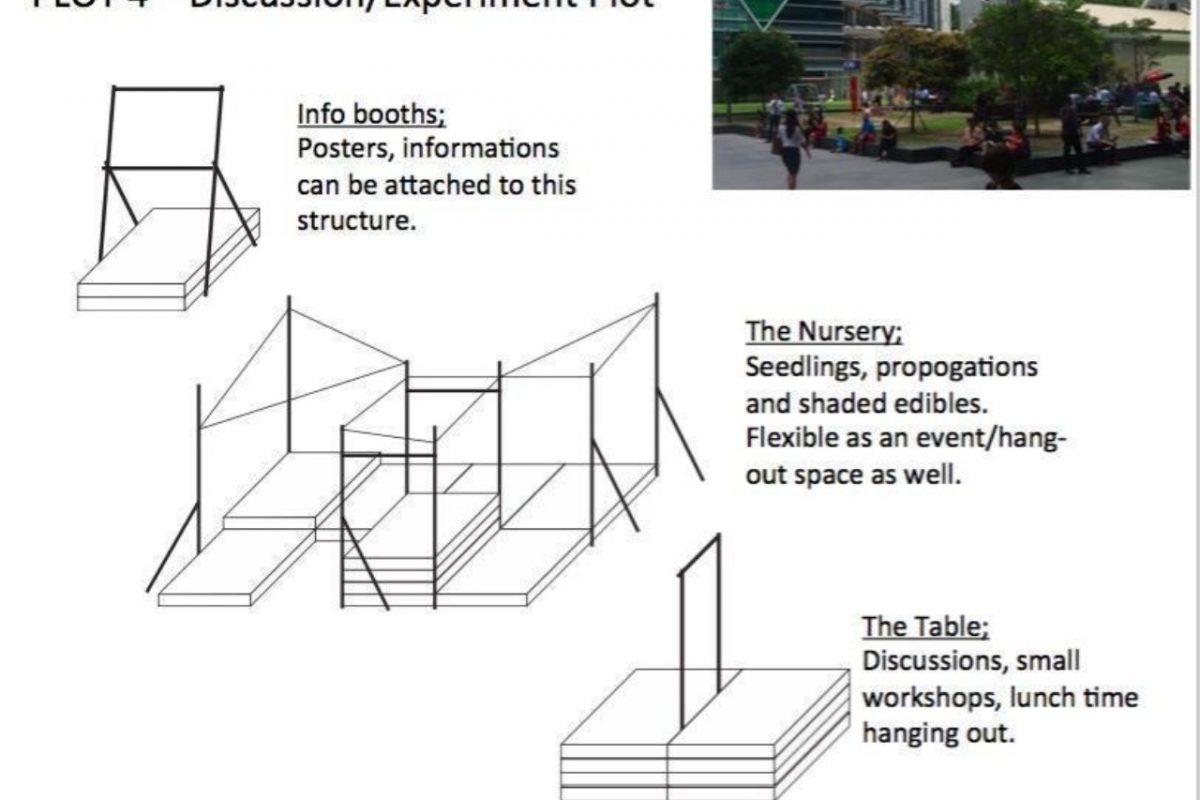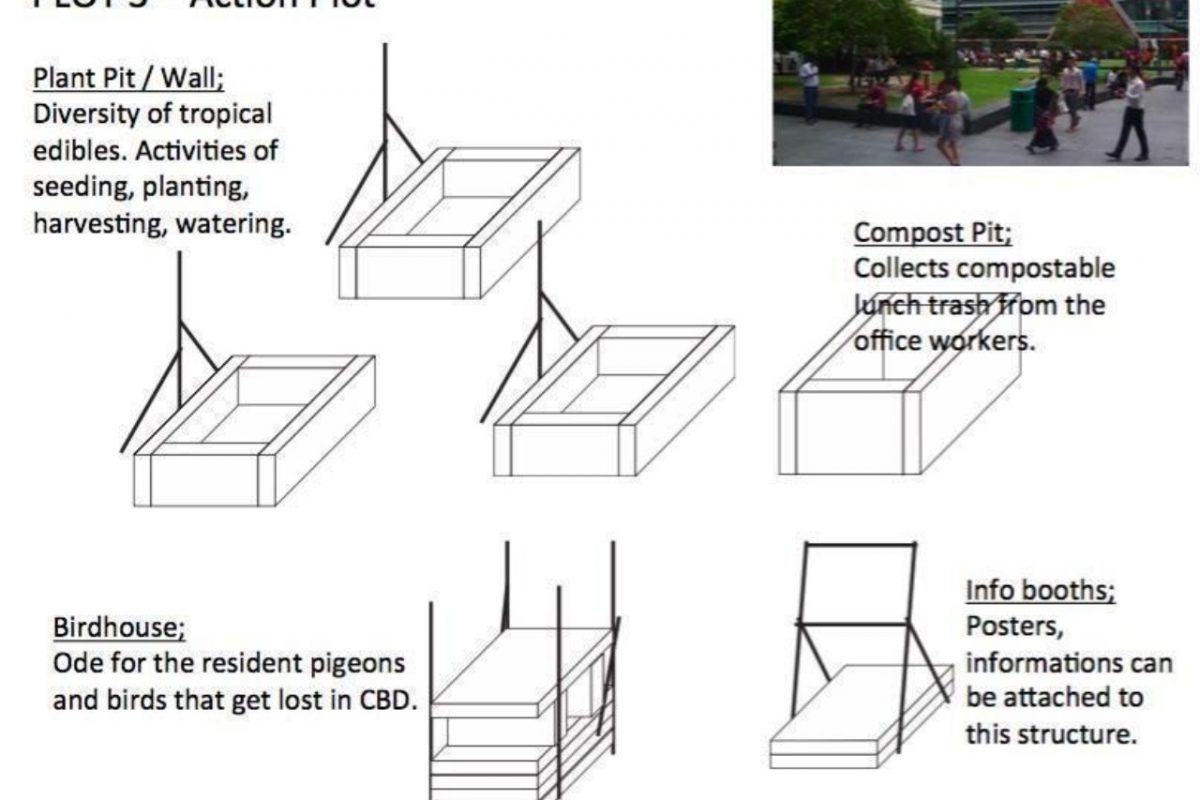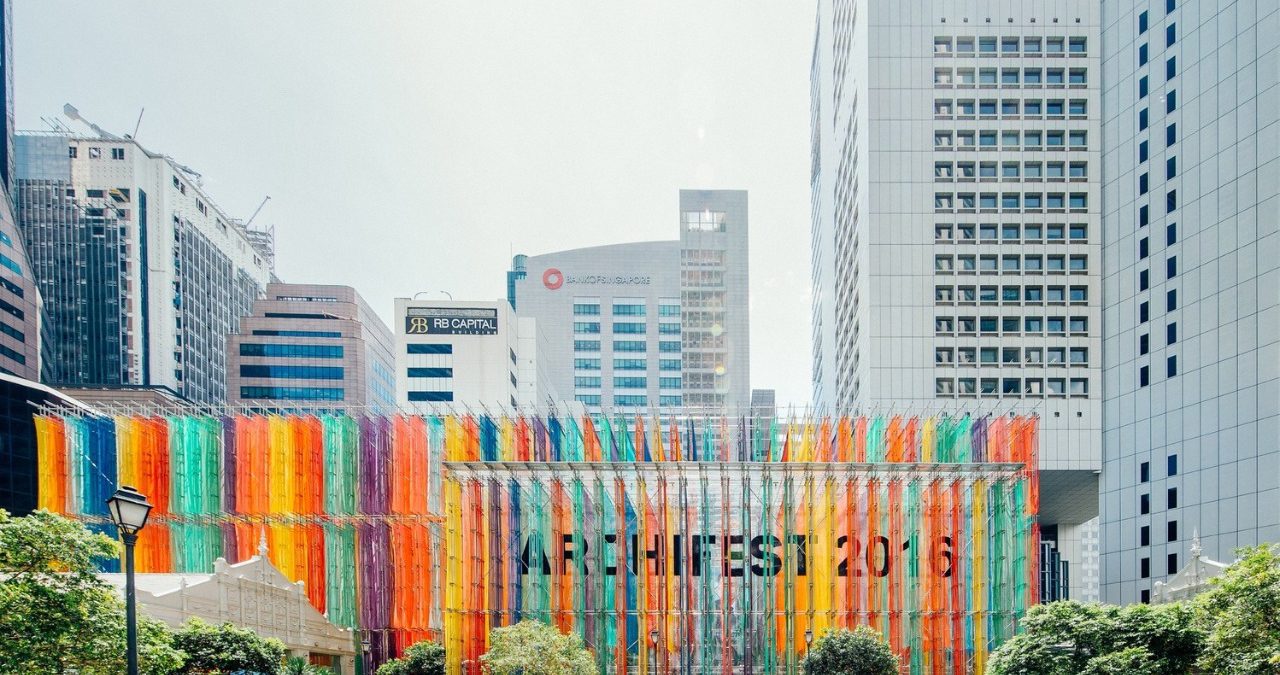
Keep up with our latest news and projects!

Food culture in Singapore is fast: packed and eaten on the go; rarely made or enjoyed slowly. Knowledge of other relationships with food, and of Singapore’s agricultural history, have been relegated to the margins. For TANAH, building spaces and moments for people to pay attention to different approaches to food is a practice of re-possessing connection to the matter of life: beyond food for consumption, moving against the flow of expanding expropriation. Co-founders Michelle Lai and Huiying Ng view these interventions as time niches for new haptic connections.
Space is also important to the duo. When working with a site, they apply placemaking as a guiding principle: by responding to the everyday routines of its users, respecting the symbolism and function of its architectural forms, and understanding it in terms of its cultural and economic significance. In addition, a crucial criteria is that interventions should seed images, habits, and practices of other futures. As science fiction writer William Gibson said, “The future is already here; it’s just not very evenly distributed.”
TANAH’s mission is to bring edge futures into the spotlight — to construct a space-time for them to exist within, and the methods needed to disperse them. Michelle and Huiying explain: “This too, is how we grow and tend to our gardens. And often, we have found that the most undervalued futures are actually closest to the futures that are most sustainable and equitable. Our work is to lure them onto the stage, bathed in a fresh light, so that people may perform them anew.”
Working with food is both the means and the end for them. It is to bring food production closer to urban dwellers — conscious that the place-specificity of a foodspace is woven into the food we eat — including at urban edges and rural spaces. It is to expand awareness for environmental issues by locating a person in place: illustrating, through simple gestures, the physical and relational locations from which we eat, live, love and perform our mundane duties, heightening our collective consciousness.
Place thus offers the possibility of Transformation: of imagination, of practice — from monotone into hybrid spaces of gathering, farming and play.
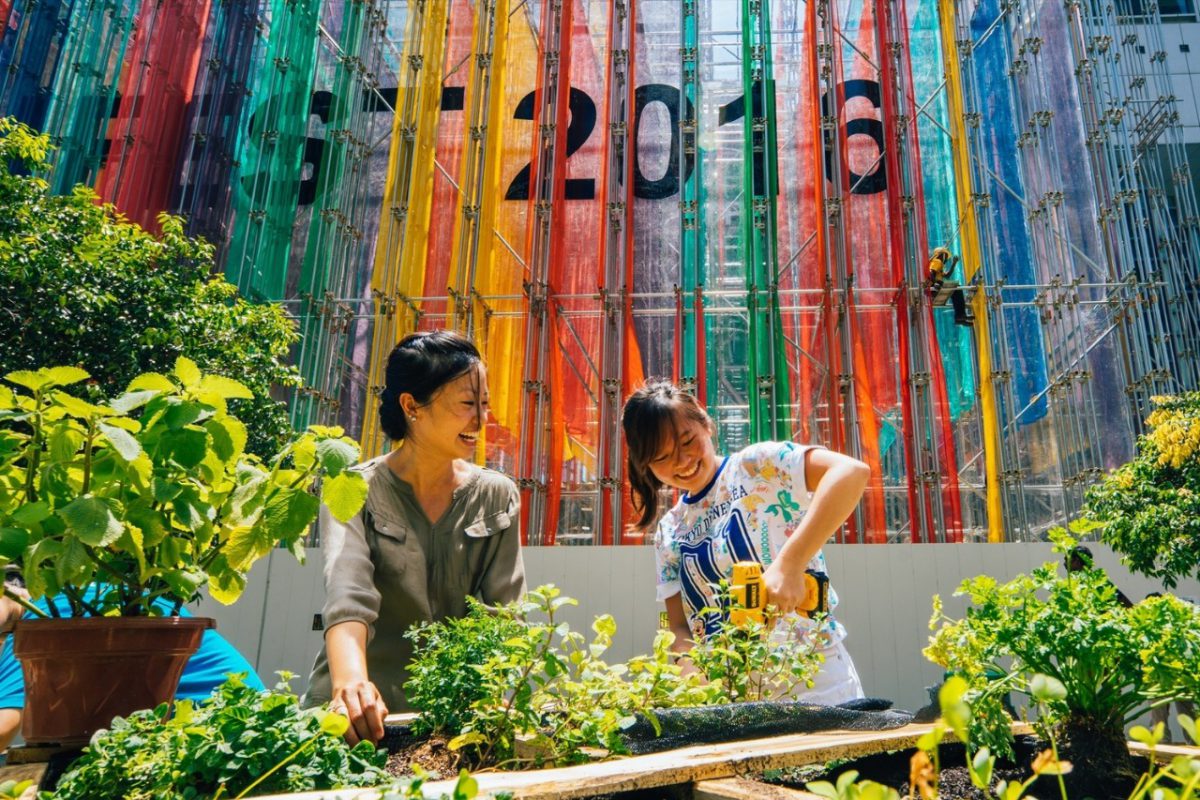
In 2016, TANAH worked on a project called SG Farm, with landscape architect Faiz bin Zohri, in conjunction with the 10th anniversary of Archifest. Archifest is a flagship festival, organised by the Singapore Institute of Architects and the Singapore Institute of Landscape Architects. The project site was Zoysia Green, at the heart of Raffles Place in Singapore’s financial district.
The goal behind SG Farm was to spark civic imaginations of the forms in which a farm in the city could look like, and how social interactions could be reshaped accordingly. During the lead-up to the festival, TANAH organised two on-site participatory design workshops for the public, in which they shared ideas about future food spaces such as the Chinampas floating farms used by the Aztecs, floating farms in Bangladesh and urban farm concepts from New York City and Tokyo. Following this, the participants contributed their personal wishlists for food awareness.
In 2016, though urban farming was gaining interest locally, people were still turned off by the heat of farming in soil-based farms. This was a question TANAH wanted to address through design provocations. Split into teams, the participants proceeded to design mock-ups of their installations on a given map. Following the richness of insights and ideas gathered from these workshops, TANAH designed a site based on the input.
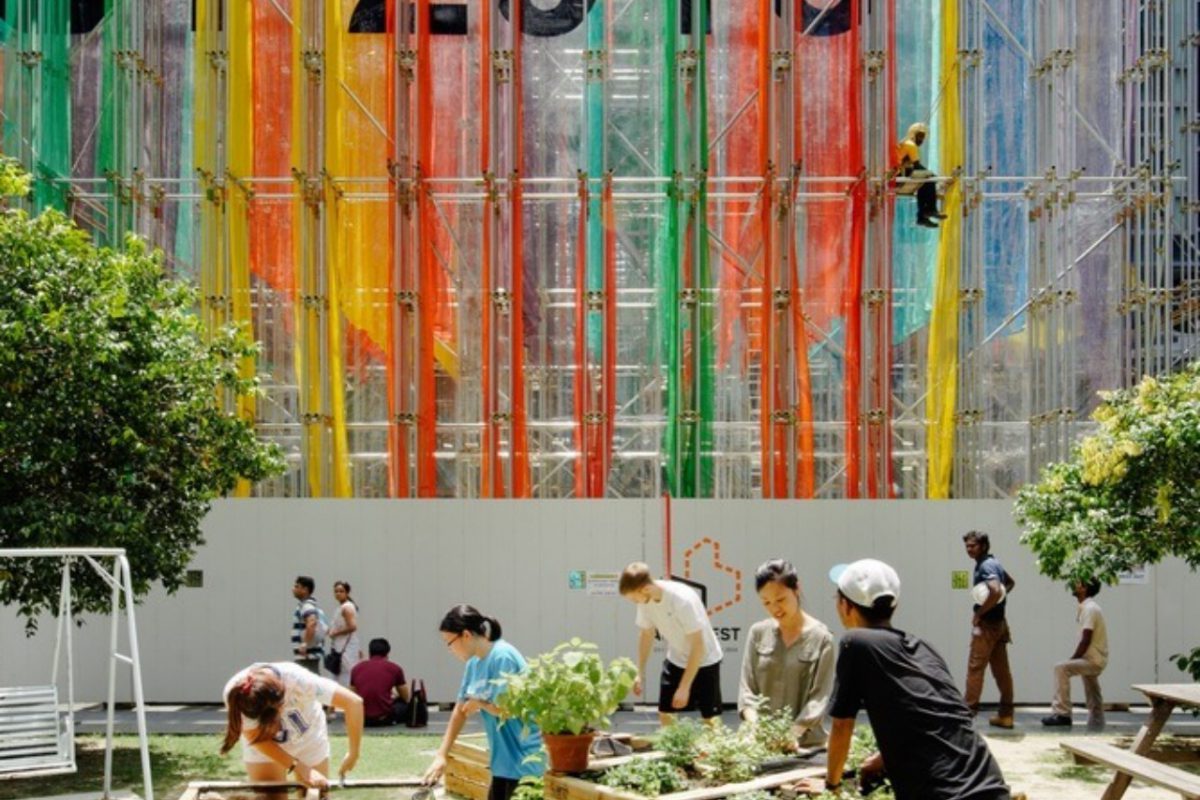
The design for the plots followed the concept of Discussion / Action. First, they designated a plot with pallets stacked to form columns of varying heights, suitable for sitting and gathering around (Discussion). Then, the same pallets were overturned and filled with a bed of soil and plants, setting the platform for the Action portion, and making SG Farm a space for creation and recreation. The garden plots were set at varying heights, with the central plots high enough to enable participants to garden at ease, without having to squat and bend over. Eventually, the Discussion and Action plots would set the tone for the events during Archifest. Recycled pallets were chosen as building blocks for their low cost, modular design. What resulted was an iteration of SG Farm, which was low-cost, using recycled materials, relatively light-weight, and easily transported.
During the course of Archifest, TANAH conducted a series of programmes around SG Farm, demonstrating the daily routines revolving around urban farms. The events served to kickstart planting awareness and know-how amongst the workers in the Central Business District.
